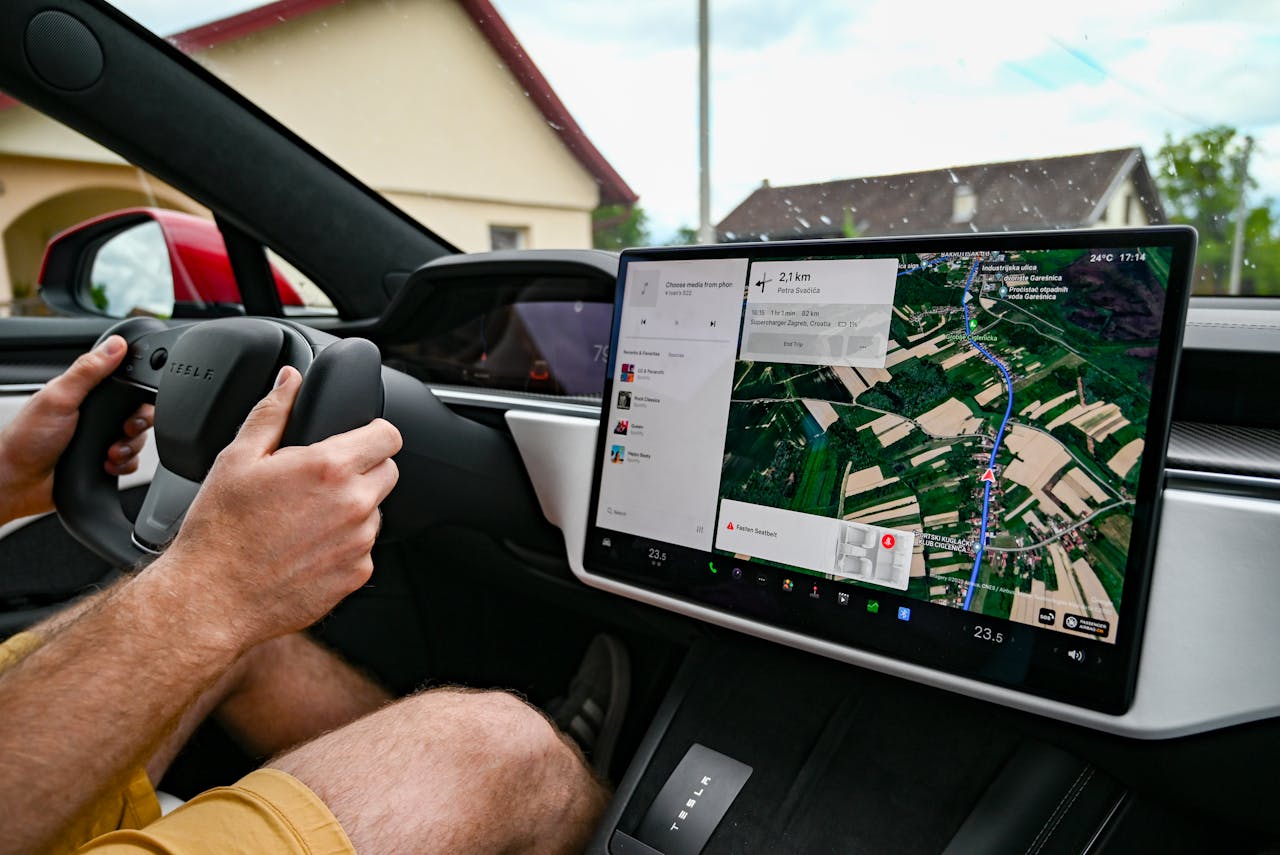Unlocking the Power of GPS Navigation: Tips and Tricks

GPS navigation has revolutionized the way we travel, making it easier and more efficient to reach our destinations. Whether you are planning a road trip, navigating a city, or simply trying to find the quickest route to work, GPS navigation systems provide invaluable assistance. This comprehensive guide will cover everything you need to know about GPS navigation, from basic concepts to advanced tips and tricks. By mastering these techniques, you’ll be able to unlock the full potential of GPS navigation and make every journey a breeze.
In today’s fast-paced world, where time is of the essence, mastering GPS navigation is more important than ever. Whether you’re embarking on a cross-country road trip or just navigating your daily commute, GPS navigation systems can make all the difference. This guide aims to provide you with the knowledge and skills needed to effectively use GPS navigation, enhancing your travel experience and ensuring you always reach your destination smoothly.
Understanding GPS Navigation
What is GPS?
GPS stands for Global Positioning System, a satellite-based navigation system that allows users to determine their exact location anywhere on Earth. It consists of a network of satellites that orbit the Earth, transmitting signals to GPS receivers. These receivers use the signals to calculate the user’s precise location, speed, and direction.
How Does GPS Navigation Work
GPS navigation works by triangulating signals from multiple satellites to pinpoint the user’s location. A GPS receiver needs to connect with at least four satellites to provide accurate location information. The receiver calculates the time it takes for each satellite signal to reach it, using this data to determine the distance from each satellite. By combining these distances, the receiver can pinpoint its exact location.
Types of GPS Devices and Systems
Standalone GPS Units
Standalone GPS units are dedicated devices designed specifically for navigation. These units are often used in cars and are known for their reliability and accuracy. They typically come with features like voice-guided directions, real-time traffic updates, and points of interest (POIs).
Smartphone GPS Apps
Smartphone GPS apps have become increasingly popular due to their convenience and accessibility. Apps like Google Maps, Waze, and Apple Maps offer powerful navigation tools right on your phone. These apps are constantly updated with the latest maps and traffic information, making them a versatile choice for navigation.
Built-In Car Navigation Systems
Many modern vehicles come equipped with built-in GPS navigation systems. These systems are integrated into the car’s dashboard and offer seamless navigation without the need for an external device. Built-in systems often provide features like real-time traffic updates, voice commands, and integration with other vehicle functions.
Getting Started with GPS Navigation
Setting Up Your GPS Device
Before you can start using GPS navigation, you need to set up your device. This typically involves charging the device, installing any necessary updates, and entering your personal preferences. For smartphone apps, make sure to download the latest version and grant the necessary permissions for location access.
Inputting Your Destination
Once your GPS device is set up, you can begin navigating by inputting your destination. This can usually be done by entering an address, selecting a point of interest, or using voice commands. Make sure to double-check the destination for accuracy to avoid any unnecessary detours.
Understanding the Interface
Familiarize yourself with the interface of your GPS device or app. Learn how to read the map, follow directions, and access important features like route options and traffic updates. Understanding the interface will help you navigate more effectively and take full advantage of your GPS navigation system.
Mastering Route Optimization
Importance of Route Optimization
Route optimization is key to efficient navigation. By selecting the best route, you can save time, reduce fuel consumption, and avoid unnecessary stress. GPS navigation systems are designed to help you find the most efficient paths to your destination.
Tips for Selecting the Best Routes
Analyze Different Routes: When you input your destination, your GPS device will typically offer several route options. Take a moment to review these options and select the one that best meets your needs, considering factors like distance, estimated travel time, and current traffic conditions.
Consider Traffic Patterns: Traffic patterns can vary throughout the day. Use your GPS navigation system to check for real-time traffic updates and select routes that avoid peak traffic hours.
Leverage Alternate Routes: Sometimes, the fastest route might not be the most direct. Be open to alternate routes that may take you through less congested areas or scenic routes that offer a more pleasant driving experience.
Utilizing GPS Features for Efficient Navigation
GPS navigation systems come with a variety of features designed to enhance your navigation experience. Make sure to take advantage of these features:
Voice-Guided Directions: Voice-guided directions allow you to keep your eyes on the road while receiving step-by-step instructions. This feature is especially useful in unfamiliar areas.
Real-Time Traffic Updates: Real-time traffic updates provide information about current road conditions, allowing you to adjust your route as needed.
Points of Interest (POIs): POIs are locations like gas stations, restaurants, and landmarks that are marked on your GPS map. Use this feature to find convenient stops along your route.
Real-Time Traffic Updates
The Role of Real-Time Traffic Updates
Real-time traffic updates are crucial for navigating busy roads and avoiding delays. GPS navigation systems use data from various sources, including traffic sensors, satellite imagery, and user reports, to provide up-to-date information about road conditions.
How to Use Real-Time Traffic Updates
Monitor Traffic Conditions: Regularly check the traffic updates on your GPS device or app to stay informed about current road conditions.
Adjust Your Route: If your GPS navigation system detects heavy traffic or road closures ahead, it will suggest alternative routes. Follow these recommendations to avoid delays and reach your destination more quickly.
Plan Ahead: Use traffic updates to plan your departure time. Leaving earlier or later than usual can help you avoid peak traffic hours and reduce travel time.
Exploring Uncharted Territories
Navigating Unfamiliar Areas
Exploring new places can be exciting, but it also comes with challenges. GPS navigation systems make it easier to navigate unfamiliar areas by providing detailed maps and accurate directions.
Tips for Exploring New Areas with GPS Navigation
Preload Maps: If you’re traveling to an area with limited internet access, preload the maps on your GPS device or app. This ensures you have access to navigation even without a data connection.
Use Offline Features: Many GPS navigation apps offer offline features that allow you to download maps and directions ahead of time. Take advantage of these features to ensure seamless navigation.
Stay Aware of Your Surroundings: While GPS navigation is a valuable tool, it’s important to stay aware of your surroundings. Pay attention to road signs and local landmarks to ensure you’re on the right track.
Discovering Hidden Gems
GPS navigation systems can help you discover hidden gems along your route. Use the POI feature to find interesting places to visit, such as scenic viewpoints, historical landmarks, and local eateries. Exploring these hidden gems can make your journey more enjoyable and memorable.
Advanced GPS Navigation Tips and Tricks
Customizing Your GPS Settings
Personalizing your GPS settings can enhance your navigation experience. Here are some settings you can adjust:
Map Display: Choose between different map views, such as 2D, 3D, or satellite imagery, based on your preferences.
Route Preferences: Set your route preferences to avoid toll roads, highways, or ferries, depending on your travel needs.
Alerts and Notifications: Customize alerts and notifications for things like speed limits, upcoming turns, and traffic updates.
Leveraging Additional Features
Many GPS navigation systems come with additional features that can enhance your travel experience:
Lane Guidance: Lane guidance helps you navigate complex intersections and highway exits by indicating the correct lane to be in.
Speed Limit Warnings: Speed limit warnings alert you if you’re exceeding the speed limit, helping you drive safely and avoid fines.
Live Services: Some GPS devices offer live services, such as weather updates, fuel prices, and parking information, to make your journey more convenient.
Troubleshooting Common GPS Navigation Issues
Even with the best GPS navigation systems, you may encounter occasional issues. Here are some common problems and how to resolve them:
Weak Signal: If your GPS device is struggling to get a signal, try moving to an open area with a clear view of the sky. Avoid tall buildings and dense foliage that can block satellite signals.
Outdated Maps: Ensure your GPS device or app is using the latest maps. Regularly update your maps to avoid navigation errors caused by outdated information.
Battery Life: GPS navigation can drain your device’s battery quickly. Use a car charger for standalone units or your smartphone to ensure your device stays powered during long trips.
Summary
GPS navigation has transformed the way we travel, providing reliable and accurate guidance to help us reach our destinations efficiently. By understanding the basics of GPS navigation, selecting the right devices and systems, and utilizing advanced features, you can unlock the full potential of GPS navigation.
Whether you’re navigating city streets, exploring new areas, or optimizing your daily commute, GPS navigation is an invaluable tool that enhances your travel experience and ensures you always find your way. With these tips and tricks, you’ll be well-equipped to master GPS navigation and enjoy seamless journeys every time.
